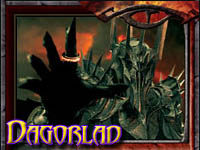|
Ambush Alley have teamed up with Osprey Books to produce a ruleset called 'Force on Force' - it's a reworking of their earlier skirmish game of modern warfare and has been made to be more suited to releasing supplements covering specific theatres and periods. And also they have changed the focus a little to include more balanced forces opposing each other, rather than the 'asymmetrical' conflicts of Somalia and Afghanistan,
I bought a copy of it a few days ago and I am just going through the rules now. The book is hardback and comes in at around 220 pages. It's the same size as the typical Osprey books (18.5cm x 25cm) and is filled with high quality artwork taken from their large range of source books as well as colour photos from Afghanistan and Iraq and model shots too.
The game is not aimed specifically at any one scale and will work with 15mm, 20mm and 28mm figures equally well, which is good since their are some great modern 28mm minis coming out from Eureka and Empress (watch out for Eureka's SEAL Team Six figs in the next couple of weeks).
The book is divided into sections that gradually introduce you to the rules, starting firstly with infantry combat and then covering mechanised combat, air support, and artillery - with a scenario at the end of each section to explore and explain the rules up to that point. I like that sort of approach as you can get the basics down before moving on to the next section.
It's a scenario-based game though, so it's definitely not a Flames of War or 40K replacement - no "points-based bring and battle" games, which will put some people off I suppose (not me though, I like a scenario with clear objectives).
The rules are well written and have some innovative mechanics to them. The basic dice mechanic is simple: roll a 4 or better. But different quality troops use different sided dice to roll that four - d6 for low quality, d8 for standard troops, d10 for veterans, and d12 for elite troops (SAS and Delta etc). And the combat resolution is a little different too: roll your attack dice and the defender rolls their dice too, compare the results and the number of attack dice that aren't equalled or beaten by the defender score a casualty, but the defender can arrange their dice in any order they want. Interesting - I've yet to play a game, but the mechanic seems to be quick to resolve and no irritating modifiers to the dice rolls are needed.
Overall, the rules seem to be very well put together and thought through. The production values are extremely high and there's absolutely no waffle in the rulebook at all - it's all rules, scenarios, tables, and random event cards. The supplements ("Road to Baghdad" and "Operation Enduring Freedom" are the first two) will cover the background history on the theatre being explored as well as the specific forces involved.
I am totally impressed with this game and believe it to be the key ruleset for modern wargaming in the years to come. If you have an interest in gaming combat from 1960s onwards, then definitely look at this product.
_________________
Dagster
|
 Top
Top Top
Top Top
Top Top
Top Top
Top Top
Top Top
Top Top
Top



